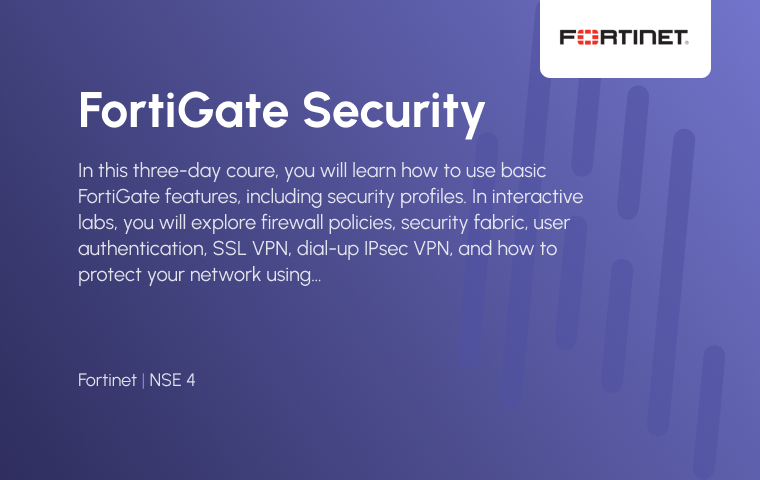
FortiGate Security
In this three-day course, you will learn how to use basic FortiGate features, including security profiles.
In interactive labs, you will explore firewall policies, security fabric, user authentication, SSL VPN, and how to protect your network using security profiles such as IPS, antivirus, web filtering, application control, and more. These administration fundamentals will provide you with a solid understanding of how to implement basic network security.
Virtual Classroom Live
Target Audience
What You’ll Learn
Course Outline
Prerequisites
Related Certifications
- Deploy the appropriate operation mode for your network
- Use the GUI and CLI for administration
- Identify the characteristics of the Fortinet Security Fabric
- Control network access to configured networks using firewall policies
- Apply port forwarding, source NAT, and destination NAT
- Authenticate users using firewall policies
- Understand encryption functions and certificates
- Inspect SSL/TLS-secured traffic to prevent encryption used to bypass security policies
- Configure security profiles to neutralize threats and misuse, including viruses, torrents, and inappropriate websites
- Apply application control techniques to monitor and control network applications that might use standard or non-standard protocols and ports
- Fight hacking and denial of service (DoS)
- Offer an SSL VPN for secure access to your private network
- Collect and interpret log entries

